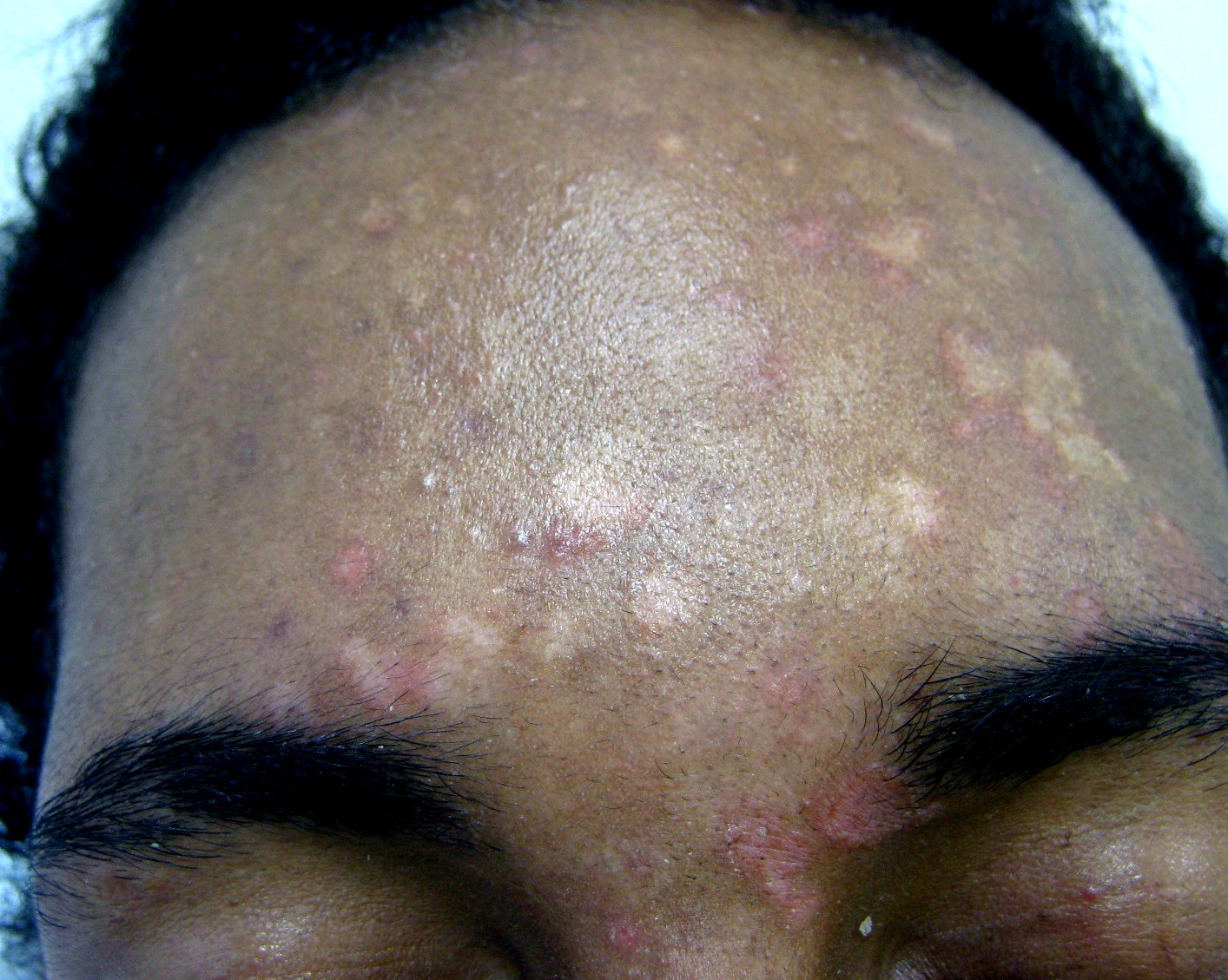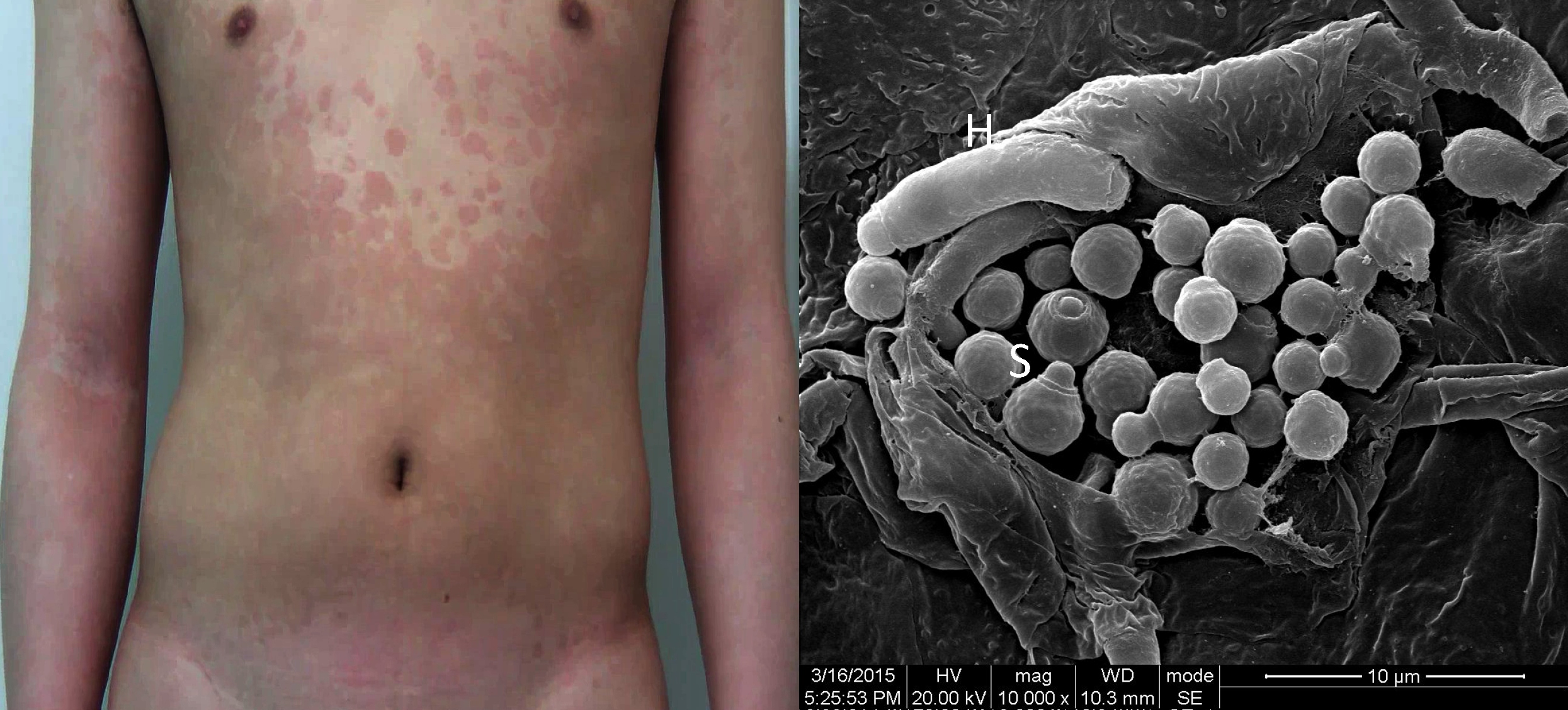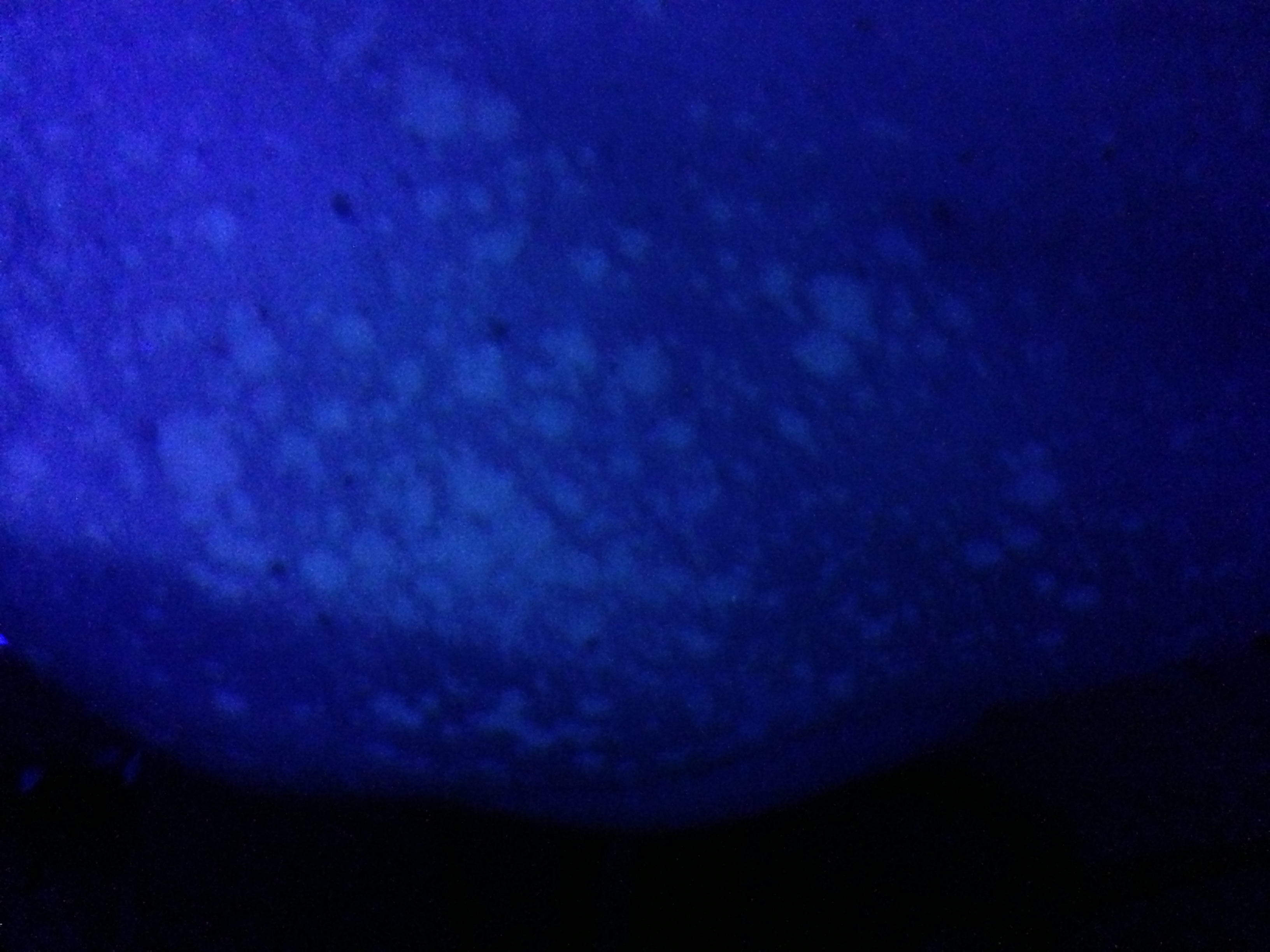Tinea Versicolor on:
[Wikipedia]
[Google]
[Amazon]
Tinea versicolor (also pityriasis versicolor) is a condition characterized by a skin eruption on the trunk and proximal extremities. The majority of tinea versicolor is caused by the fungus '' Malassezia globosa'', although ''

 The symptoms of this condition include:
* Occasional fine scaling of the skin producing a very superficial ash-like scale
* Pale, dark tan, or pink in color, with a reddish undertone that can darken when the patient is overheated, such as in a hot shower or during/after exercise. Tanning typically makes the affected areas contrast more starkly with the surrounding skin.
* Sharp borderPityriasis versicolor , DermNet New Zealand
The symptoms of this condition include:
* Occasional fine scaling of the skin producing a very superficial ash-like scale
* Pale, dark tan, or pink in color, with a reddish undertone that can darken when the patient is overheated, such as in a hot shower or during/after exercise. Tanning typically makes the affected areas contrast more starkly with the surrounding skin.
* Sharp borderPityriasis versicolor , DermNet New Zealand
Dermnetnz.org. Retrieved on 2016-10-14. Pityriasis versicolor is more common in hot, humid climates or in those who sweat heavily, so it may recur each summer. The yeasts can often be seen under the microscope within the lesions and typically have a so-called "spaghetti and meatball appearance" as the round yeasts produce filaments. In people with dark skin tones, pigmentary changes such as
 Tinea versicolor may be diagnosed by a
Tinea versicolor may be diagnosed by a
Malassezia furfur
''Malassezia furfur'' (formerly known as ''Pityrosporum ovale'' in its hyphal form) is a species of yeast (a type of fungus) that is naturally found on the skin surfaces of humans and some other mammals. It is associated with a variety of dermat ...
'' is responsible for a small number of cases. These yeasts
Yeasts are eukaryotic, single-celled microorganisms classified as members of the fungus kingdom. The first yeast originated hundreds of millions of years ago, and at least 1,500 species are currently recognized. They are estimated to constitut ...
are normally found on the human skin
Skin is the layer of usually soft, flexible outer tissue covering the body of a vertebrate animal, with three main functions: protection, regulation, and sensation.
Other cuticle, animal coverings, such as the arthropod exoskeleton, have diffe ...
and become troublesome only under certain circumstances, such as a warm and humid environment, although the exact conditions that cause initiation of the disease process are poorly understood.
The condition pityriasis versicolor was first identified in 1846. Versicolor comes from the Latin ' 'to turn' + ''color''. It is also commonly referred to as Peter Elam's disease in many parts of South Asia.
Signs and symptoms

 The symptoms of this condition include:
* Occasional fine scaling of the skin producing a very superficial ash-like scale
* Pale, dark tan, or pink in color, with a reddish undertone that can darken when the patient is overheated, such as in a hot shower or during/after exercise. Tanning typically makes the affected areas contrast more starkly with the surrounding skin.
* Sharp borderPityriasis versicolor , DermNet New Zealand
The symptoms of this condition include:
* Occasional fine scaling of the skin producing a very superficial ash-like scale
* Pale, dark tan, or pink in color, with a reddish undertone that can darken when the patient is overheated, such as in a hot shower or during/after exercise. Tanning typically makes the affected areas contrast more starkly with the surrounding skin.
* Sharp borderPityriasis versicolor , DermNet New ZealandDermnetnz.org. Retrieved on 2016-10-14. Pityriasis versicolor is more common in hot, humid climates or in those who sweat heavily, so it may recur each summer. The yeasts can often be seen under the microscope within the lesions and typically have a so-called "spaghetti and meatball appearance" as the round yeasts produce filaments. In people with dark skin tones, pigmentary changes such as
hypopigmentation
Hypopigmentation is characterized specifically as an area of skin becoming lighter than the baseline skin color, but not completely devoid of pigment. This is not to be confused with depigmentation, which is characterized as the absence of all pi ...
(loss of color) are common, while in those with lighter skin color, hyperpigmentation
Hyperpigmentation is the darkening of an area of skin or nails caused by increased melanin.
Causes
Hyperpigmentation can be caused by sun damage, inflammation, or other skin injuries, including those related to acne vulgaris.James, William; Ber ...
(increase in skin color) is more common. These discolorations have led to the term "sun fungus".
Pathophysiology
In cases of tinea versicolor caused by the fungus ''Malassezia furfur
''Malassezia furfur'' (formerly known as ''Pityrosporum ovale'' in its hyphal form) is a species of yeast (a type of fungus) that is naturally found on the skin surfaces of humans and some other mammals. It is associated with a variety of dermat ...
'', lightening of the skin occurs due to the fungus's production of azelaic acid
Azelaic acid (AzA) is an organic compound with the formula HOOC(CH2)7 COOH. This saturated dicarboxylic acid exists as a white powder. It is found in wheat, rye, and barley. It is a precursor to diverse industrial products including polymers an ...
, which has a slight bleaching effect.
Diagnosis
potassium hydroxide
Potassium hydroxide is an inorganic compound with the formula K OH, and is commonly called caustic potash.
Along with sodium hydroxide (NaOH), KOH is a prototypical strong base. It has many industrial and niche applications, most of which exp ...
(KOH) preparation and lesions may fluoresce copper-orange when exposed to Wood's lamp
A blacklight, also called a UV-A light, Wood's lamp, or ultraviolet light, is a lamp that emits long-wave (UV-A) ultraviolet light and very little visible light. One type of lamp has a violet filter material, either on the bulb or in a separat ...
.
The differential diagnosis for tinea versicolor infection includes:
* Progressive macular hypomelanosis
*Pityriasis alba
Pityriasis alba is a skin condition, a type of dermatitis, commonly seen in children and young adults as dry, fine-scaled, pale patches on the face. It is self-limiting and usually only requires use of moisturizer creams.
The condition is so name ...
*Pityriasis rosea
Pityriasis rosea is a type of skin rash. Classically, it begins with a single red and slightly scaly area known as a "herald patch". This is then followed, days to weeks later, by an eruption of many smaller scaly spots; pinkish with a red edge i ...
*Seborrheic dermatitis
Seborrhoeic dermatitis, sometimes inaccurately referred to as seborrhoea, is a long-term skin disorder. Symptoms include red, scaly, greasy, itchy, and inflamed skin. Areas of the skin rich in oil-producing glands are often affected including the ...
*Erythrasma
Erythrasma is a superficial skin infection that causes brown, scaly skin patches. It is caused by '' Corynebacterium minutissimum'' bacteria, a normal part of skin flora (the microorganisms that are normally present on the skin).
There are two ty ...
*Vitiligo
Vitiligo is a disorder that causes the skin to lose its color. Specific causes are unknown but studies suggest a link to immune system changes.
Signs and symptoms
The only sign of vitiligo is the presence of pale patchy areas of depigmen ...
*Leprosy
Leprosy, also known as Hansen's disease (HD), is a long-term infection by the bacteria ''Mycobacterium leprae'' or ''Mycobacterium lepromatosis''. Infection can lead to damage of the nerves, respiratory tract, skin, and eyes. This nerve damag ...
* Syphilis
*Post-inflammatory hypopigmentation
Treatment
Treatments for tinea versicolor include: *Topical
A topical medication is a medication that is applied to a particular place on or in the body. Most often topical medication means application to body surfaces such as the skin or mucous membranes to treat ailments via a large range of classes ...
antifungal medications
An antifungal medication, also known as an antimycotic medication, is a pharmaceutical fungicide or fungistatic used to treat and prevent mycosis such as athlete's foot, ringworm, candidiasis (thrush), serious systemic infections such as cryp ...
containing selenium sulfide Selenium sulfide can refer to either of the following:
* Selenium disulfide, SeS2
* Selenium hexasulfide, Se2S6
{{Short pages monitor